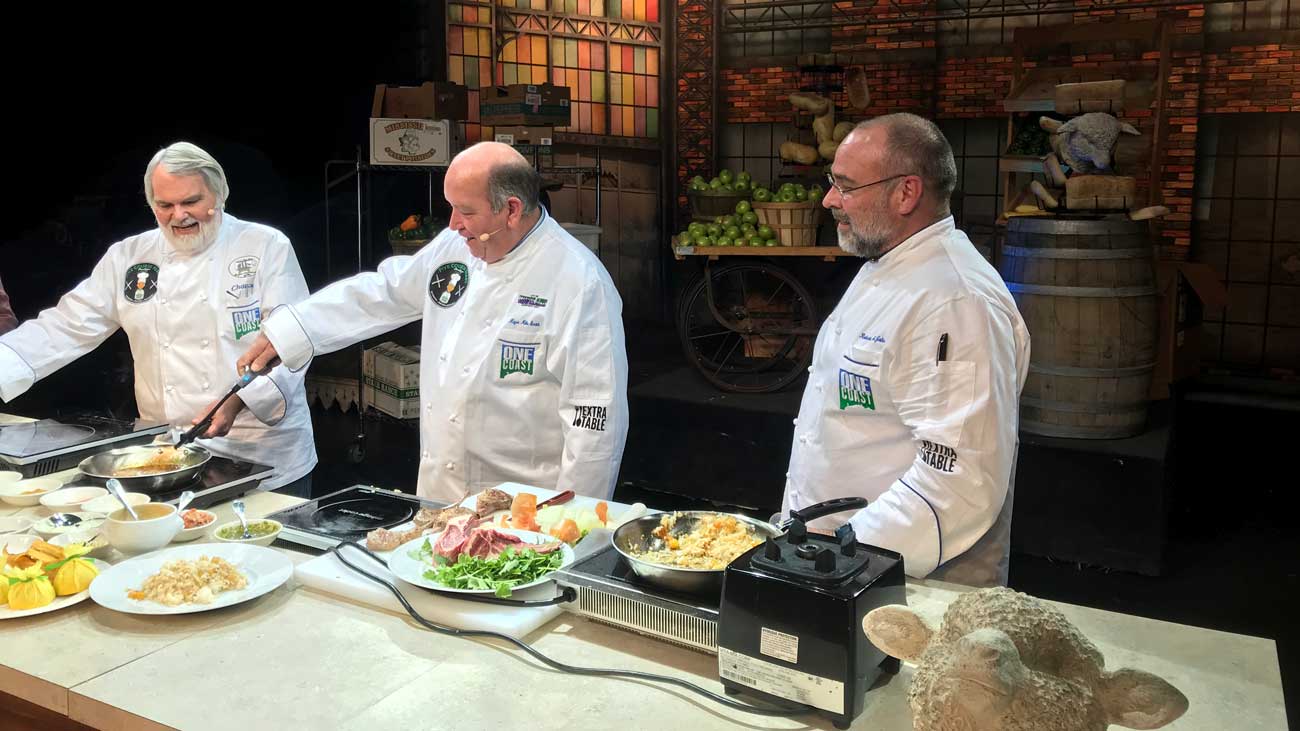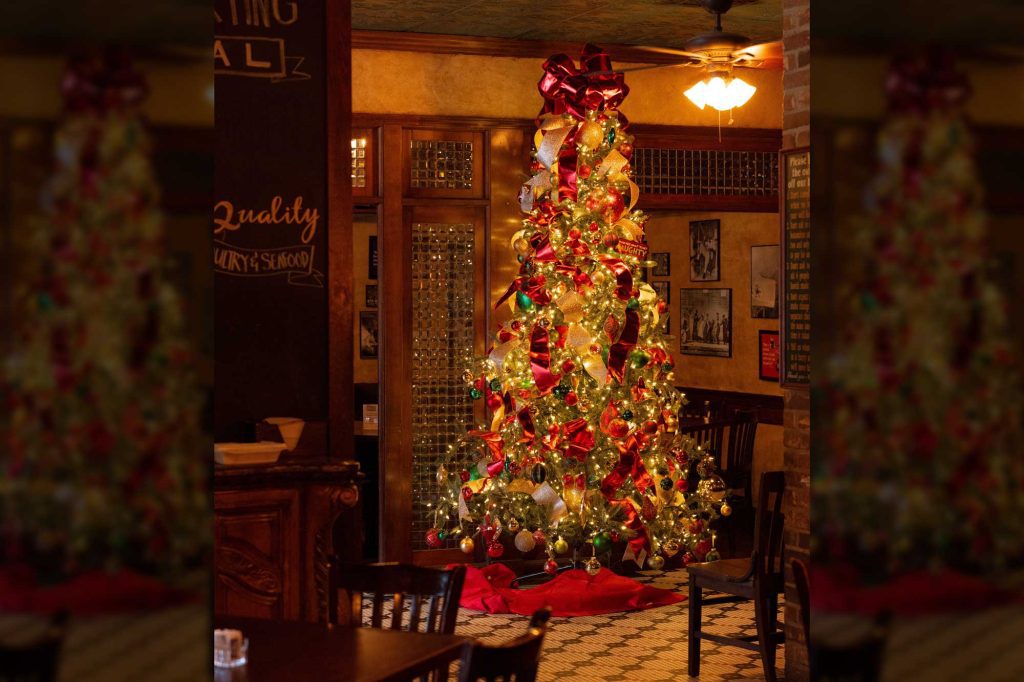“What is your favorite ingredient?”
If that’s not the most-asked interview question I receive, then it certainly is in the top three.
The question isn’t, “What ingredient could you not live without?” No. It’s about a “favorite” ingredient, the component of a dish that you would rather eat over all others, the element in a recipe that makes you most happy. The menu item that— when you see it among all of the other offerings— creates an argument with your spouse over who gets to order that selection.
For me, it’s is an easy answer: Crabmeat.
I grew up eating a lot of crabmeat. My summers were spent on the Mississippi Gulf Coast where we always had several crab traps submerged in a few choice honey holes along the Pascagoula River and throughout the Mississippi Sound. My mother, brother, and I would check the traps twice a day, collect our haul, take the crabs back to our tiny fish camp, boil them, pick them, and eat them. The crabmeat we didn’t eat right away was stored for the next day’s gumbo or West Indies Salad.
The blue crab’s scientific name is Callinectes sapidus which has both Greek and Latin origins. In Greek “calli” means beautiful, and “nectes” is swimmer. The Latin word for “savory” is sapidus. I love the title “beautiful swimmer.”
Actually, one doesn’t typically think of arthropods as being good swimmers. A fish seems to be hydro-dynamically designed to glide through the water. A crab moves sideways, and its shell is hard, which typically wouldn’t lend itself to easy movement through salt water. The key is on the back “swimmer” legs of the crustacean. Those two legs act as paddles and help the crab move swiftly through the water. Swimming is nice, but more importantly, the best crabmeat is housed inside the shell at the base of the swimmer legs. One crab produces two “jumbo” lumps of crabmeat and naturally, the larger the crab, the larger the lumps.
Maryland lays claim to a lot of blue-crab hype, but the species is the same from Nova Scotia to the Chandeleur Sound— same crab, different cooks. In Maryland they typically steam crabs and season with Old Bay seasoning. Down here we boil crabs and use Creole-inspired seasonings.
Marylanders tend to be a little snooty when talking about their crabs, but in reality— from October through March— a large portion of what they are eating are crabs shipped from Mississippi and Louisiana waters.
August is crab month. This time of year the salt water comes further inland. In the waning months of summer, water that was fresh in June, becomes brackish and creates a perfect environment for blue crabs.
Crabmeat is still a large part of my life. It is the year-round focus for a large portion of our restaurant’s menus. For the last 10 years our New Orleans-themed restaurant takes full advantage of the late-summer crabmeat harvest. In one month— August— we will purchase and prepare over 1,600 pounds of crabmeat. That’s not an advertisement for the restaurant, but a testament to people’s dedication and love of crabmeat in this part of the world.
In the Atlantic states, where they steam crab, a lot of places serve whole crab and let the customers do most of the work. Down here cooked and picked crabmeat is typically a component in dishes. Crabmeat must be handled gently and— since it is already cooked— must be added to dishes at the last minute of the cooking process to make sure and keep the lobes as intact as possible.
Crabmeat is my go-to ingredient, not only because I love to eat it, but also because it is so versatile. It can be served as the featured protein in a sandwich, soup, or salad, or lightly sautéed and served over fish, steak, or crab cakes. It can be baked au gratin or stuffed inside flounder or redfish. We use it in egg rolls and wontons and bake it inside puff pastry.
During those childhood summers on the Gulf Coast we usually ate a large breakfast in the morning, a sack lunch out of an ice chest on the boat, and fresh fish, shrimp, and/or crab for supper. Occasionally we would venture out to one of the old-line restaurants in Biloxi or Gautier such as Baricev’s or The Tiki Room. My favorite po-boys were served at Rosetti’s on the Back Bay in Biloxi. I always ordered the Vancleve Special— crabmeat dressing with cheese pressed, Biloxi-style, using bread made by Desporte’s Bakery. Excellent.
Today we purchase a substantial amount of crabmeat from Todd Rosetti and his family, and ironically, a large protion of that crabmeat ends up in a Vancleve Special sandwich as we try to keep that family’s coastal culinary tradition afloat.
By the way, the answer to the earlier discussed, “What item could you not live without?” is salt. The item I choose not to live without is fresh Gulf blue crabmeat. I can’t imagine a life without my beautiful swimmers.
Crabmeat Wontons with a Sweet Chili Pepper Dipping Sauce
1/2 pound cream cheese, softened
1 tsp soy sauce
1 tsp hot sauce
1/8 tsp fresh ginger, finely minced
1 tsp creole seasoning
2 Tbl green onions, very thinly sliced
1/2 pound fresh lump crab meat
32-39 Wonton Skins
1-2 quarts vegetable oil for frying
Using the paddle attachment on an electric mixer, whip the cream cheese until light and fluffy, scraping the sides and bottom of the bowl several times to make sure all of the cream cheese gets whipped. Turn off the mixer and add soy sauce, hot sauce, ginger and Creole seasoning. Mix on medium speed until all ingredients are well blended, again, scraping down the sides of the bowl several times. Remove the paddle attachment and gently fold in the green onions and crab meat. Refrigerate the mixture for at least two hours before filling wontons. The filling may be made a day in advance.
To fill the wontons:
Spread 10-12 wonton skins on a flat surface, place 2-3 tsp of filling in the center of each wrapper. Using a pastry brush, slightly dampen the outer edges of the wrapper, but do not soak them. Firmly seal the outer edges together to form a semicircle. Place the finished wontons on a baking sheet lined with waxed paper. Continue this process until all wrappers have been filled. Place the finished wontons in the freezer until they become firm.
To fry:
Preheat oven to 200 degrees and line a baking sheet with paper towels.
Heat the oil to 350 degrees in a 8-10 quart heavy duty sauce pot, or a large cast iron skillet. Gently place 10-12 wontons in the oil. Using a large slotted spoon, turn the wontons over to make sure both sides are browned. Cook wontons for approx. 5-7 minutes, or until both sides are golden brown. Remove the wontons using a slotted spoon and place on the towel lined baking sheet. Hold the cooked wontons in the warm oven and continue cooking the remaining wontons.
Wontons may be made up to two weeks in advance and stored frozen. If freezing for a period of time, first allow the wontons to freeze uncovered on a baking sheet, when they are completely frozen, you may place them in an airtight container.
Yield 30-36 Wontons
Sweet Chili Pepper Dipping Sauce
1 /4 cup red chili pepper flakes
1 cup water
1 large red bell pepper, seeds removed
1 Tbl garlic, minced
1 Tbl fresh ginger, minced
1 /2 cup rice vinegar
1 cup white wine vinegar
3 /4 cup corn syrup
1 cup sugar
2 Tbl water
2 Tbl cornstarch
Bring one cup of water to a boil in a small sauce pot. Stir in chili flakes and simmer five minutes. Strain flakes, set aside, and discard water.
.
Place red bell pepper, garlic and ginger in a small stainless steel sauce pot with vinegars and simmer 5-6 minutes. Allow mixture to cool slightly, then puree in a blender. Return pureed mixture to the stainless steel pot and add sugar and corn syrup Bring the mixture back to a simmer.
Dissolve corn starch in the water and blend into the red pepper mixture. Once it returns to a simmer, remove from heat. Stir in the red pepper flakes and chill.
May be made one week in advance.
Yield: 3 cups



